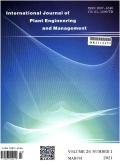The Cloud Model Theory of Intelligent Control Method for Non-Minimum-Phase and Non-Self-Balancing System in Nuclear Power
International Journal of Plant Engineering and Management
Pub Date : 2018-07-22
DOI:10.1115/ICONE26-81829
引用次数: 3
Abstract
Steam generator (SG) is one of the key equipment of nuclear power units. Because of the large range of its loads changing, the water level control of SG effectively is an essential secure guarantee of nuclear power plants. SG is a complex system, besides imbalance and non-minimum phase characteristic, it also has the properties of nonlinearity, time-varying and with small stability margin. There are many difficulties in water level control of SG. Of which false water level and varying parameters are the most severe problems. In this paper, first the water level features and the water level control principle of U-tube steam generator (UTSG) are introduced. Then mathematical model mechanism and both the static and dynamic characteristic of it water level are discussed. Finally various control methods are used for comparing the control effect. Intelligent control is a type of control strategy which imitates human intelligence behavior. It is mainly aimed at the controlled plant with complicate model parameters, or which model structure hard to describe accurately by mathematical method. Cloud Model theory is proposed by Academician Li Deyi based on the idea of artificial intelligence with uncertainty. This theory focus on analyzing the uncertainty of control plant, realizes the uncertain conversion between qualitative concept and quantitative numerical by combining ambiguity and randomness. In the field of control technology, ambiguity and randomness make it difficult to establishing precise mathematical model of control plant, and become a bottleneck during the research of improving stability, accuracy and quickness of control system. In this context, Cloud Model can be a good conversion between qualitative concept and quantitative numerical due to its ability of showing the uncertainty of qualitative concept which described by natural language. Under the action of external input, system control can be realized by inferencing according to the qualitative concept and uncertainty rules of Cloud Model. In this paper, the researched Cloud Model control system is based on normal distribution, because a large number of random events in nature and society obey or approximately obey normal distribution. The rate of convergence of Cloud Model control is evidently faster than PID. Moreover, the capability of Cloud Model control in tracking, adapting, anti-interference and overcoming large time lag are apparently superior when comparing with the control effect of PID.核电非最小相位非自平衡系统智能控制方法的云模型理论
蒸汽发生器是核电机组的关键设备之一。由于SG的负荷变化范围大,因此有效的水位控制是核电站必不可少的安全保障。SG是一个复杂的系统,除了不平衡和非最小相位特性外,它还具有非线性、时变和小稳定裕度的特性。SG的水位控制存在许多困难。其中假水位和参数变化是最严重的问题。本文首先介绍了u型管蒸汽发生器(UTSG)的水位特点和水位控制原理。在此基础上,讨论了其数学模型、机理和静、动态特性。最后采用不同的控制方法对控制效果进行了比较。智能控制是一种模仿人类智能行为的控制策略。主要针对被控对象模型参数复杂或模型结构难以用数学方法精确描述的问题。云模型理论是李德毅院士基于不确定性人工智能的思想提出的。该理论侧重于分析控制对象的不确定性,将模糊性与随机性相结合,实现了定性概念与定量数值之间的不确定性转换。在控制技术领域,模糊性和随机性使得控制对象难以建立精确的数学模型,成为研究提高控制系统稳定性、准确性和快速性的瓶颈。在这种情况下,云模型能够表现出自然语言描述的定性概念的不确定性,是定性概念与定量数值之间的良好转换。在外部输入作用下,根据Cloud Model的定性概念和不确定性规则进行推理,实现系统控制。本文所研究的云模型控制系统是基于正态分布的,因为自然界和社会中大量的随机事件服从或近似服从正态分布。云模型控制的收敛速度明显快于PID控制。此外,与PID控制效果相比,云模型控制在跟踪、自适应、抗干扰和克服大时滞方面的能力明显优于PID控制。
本文章由计算机程序翻译,如有差异,请以英文原文为准。
求助全文
约1分钟内获得全文
求助全文

 求助内容:
求助内容: 应助结果提醒方式:
应助结果提醒方式:


